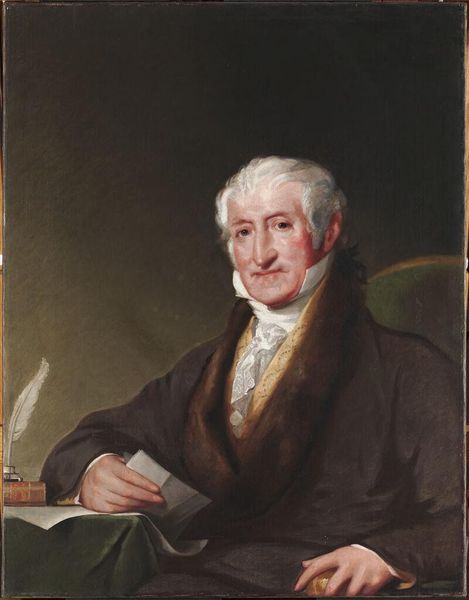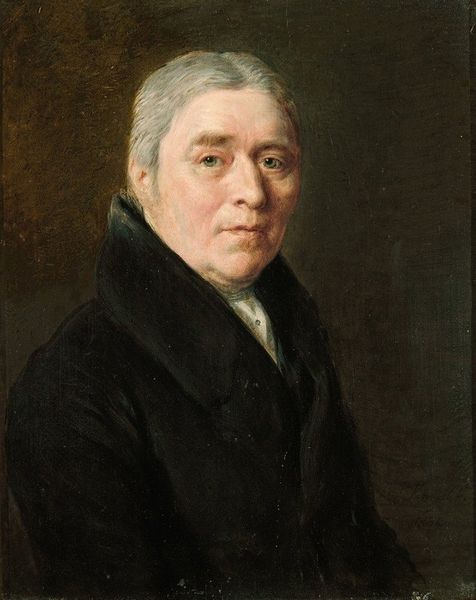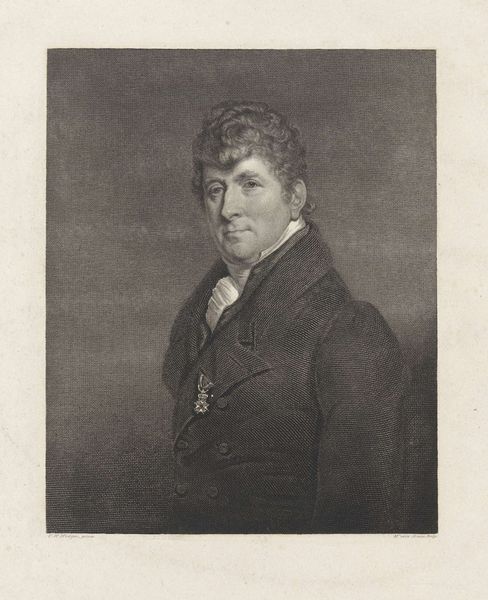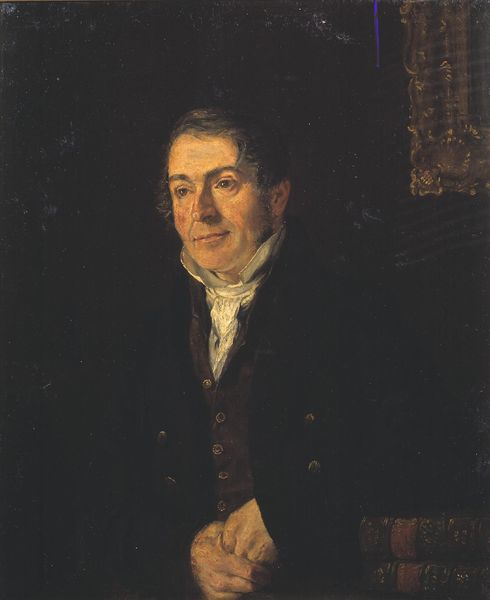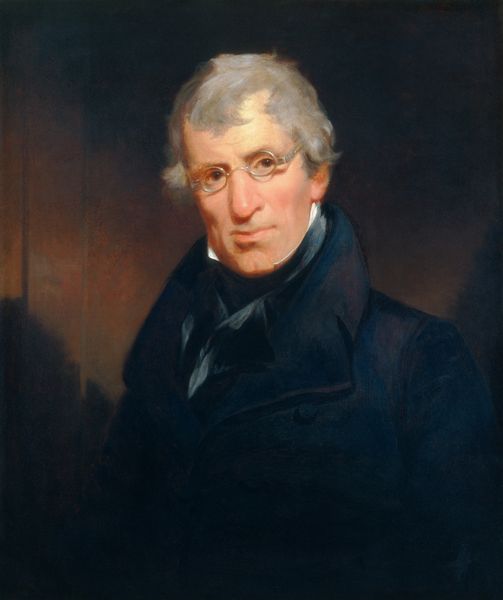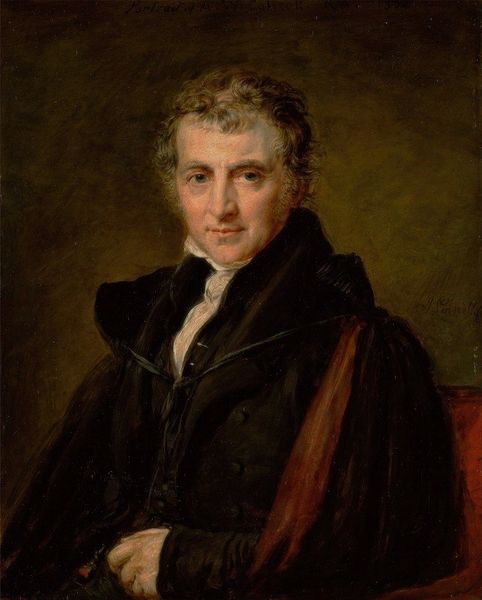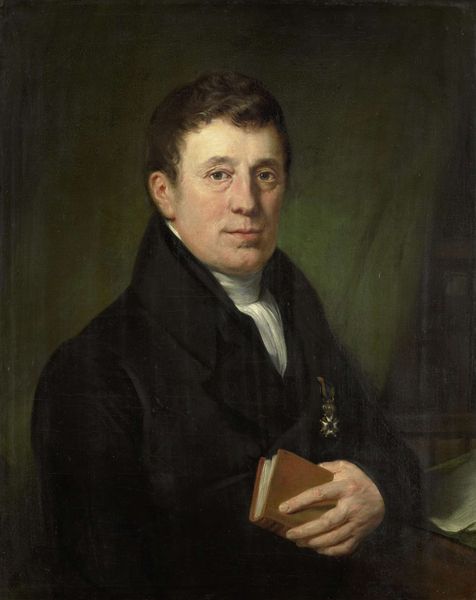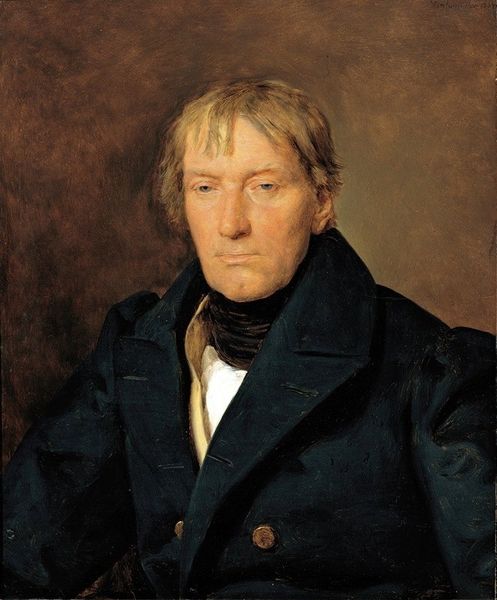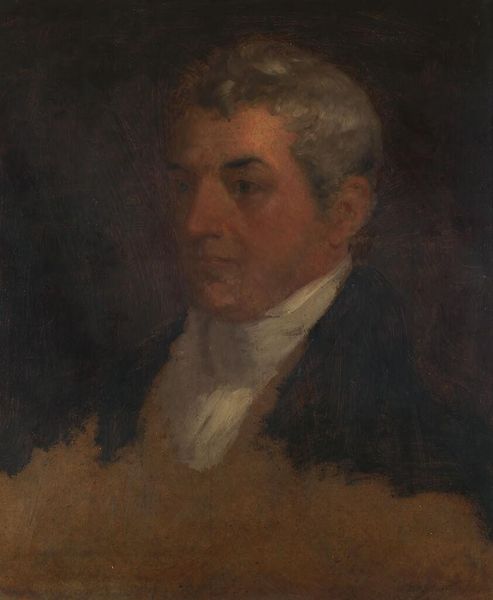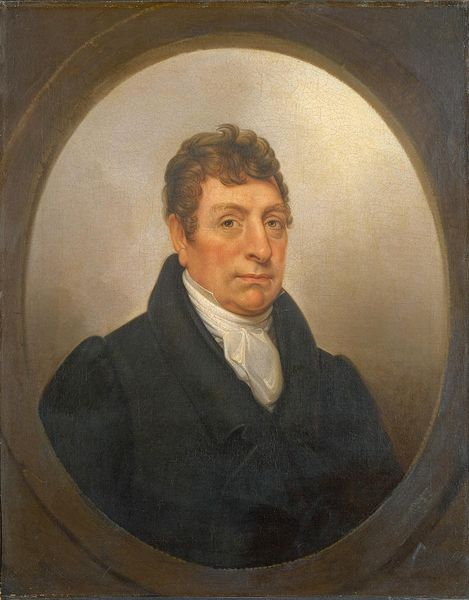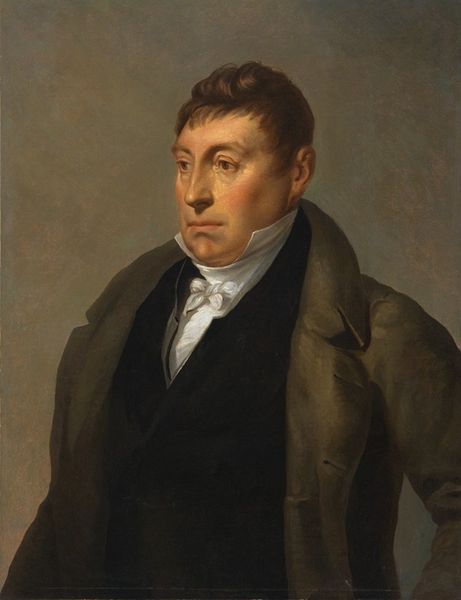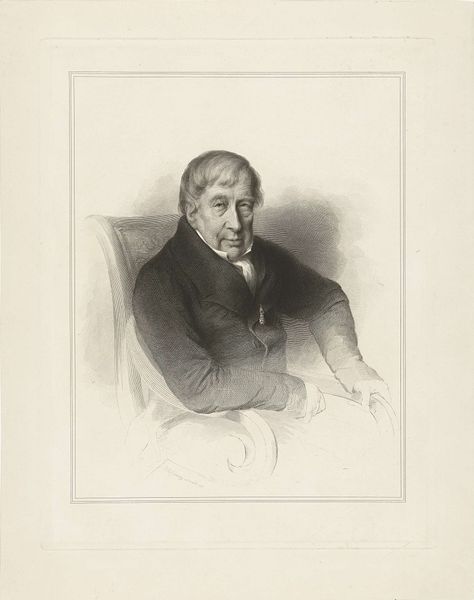
Dimensions: support: 749 x 629 mm frame: 1007 x 875 x 95 mm
Copyright: CC-BY-NC-ND 4.0 DEED, Photo: Tate
Editor: Here we have Sir David Wilkie's portrait of Thomas Daniell, R.A. The sitter seems enveloped by darkness, almost like he's receding into the background. What's your perspective on this portrait? Curator: Well, consider the East India Company's pervasive influence at this time. Daniell, as a landscape painter in India, inevitably participated in a visual project that, whether consciously or not, supported imperial narratives. Does the darkness hint at the complex, often obscured, realities of colonial power? Editor: That's a thought-provoking connection. I hadn't considered the implications of his work within that framework. Curator: Portraits like this aren’t just about individual likeness; they're about power dynamics. By understanding the historical context, we can unveil the layers of meaning embedded in the composition, the sitter's attire, even the very shadows themselves. Editor: That really shifts my understanding. I'll definitely look at portraits differently now. Curator: Exactly! Art becomes a mirror reflecting the socio-political landscape.
Comments
tate 7 months ago
⋮
http://www.tate.org.uk/art/artworks/wilkie-thomas-daniell-ra-n00231
Join the conversation
Join millions of artists and users on Artera today and experience the ultimate creative platform.
tate 7 months ago
⋮
Thomas Daniell specialised in topographical painting, that is, representations of specific landscape scenery. He made his name with a series of prints of views based on his travels in India in 1786–1794. Such ‘exotic’ Indian scenes became the stock-in-trade for Daniell for the rest of his career. Wilkie presents the painter as a sobre and benign figure recalling, ultimately, the example of Rembrandt’s portraits. The reserved and modest character of the painting is typical of early-nineteenth- century artist’s portraits, which tend to present an image of sturdy professionalism rather than flamboyance or extravagance. Gallery label, September 2004

